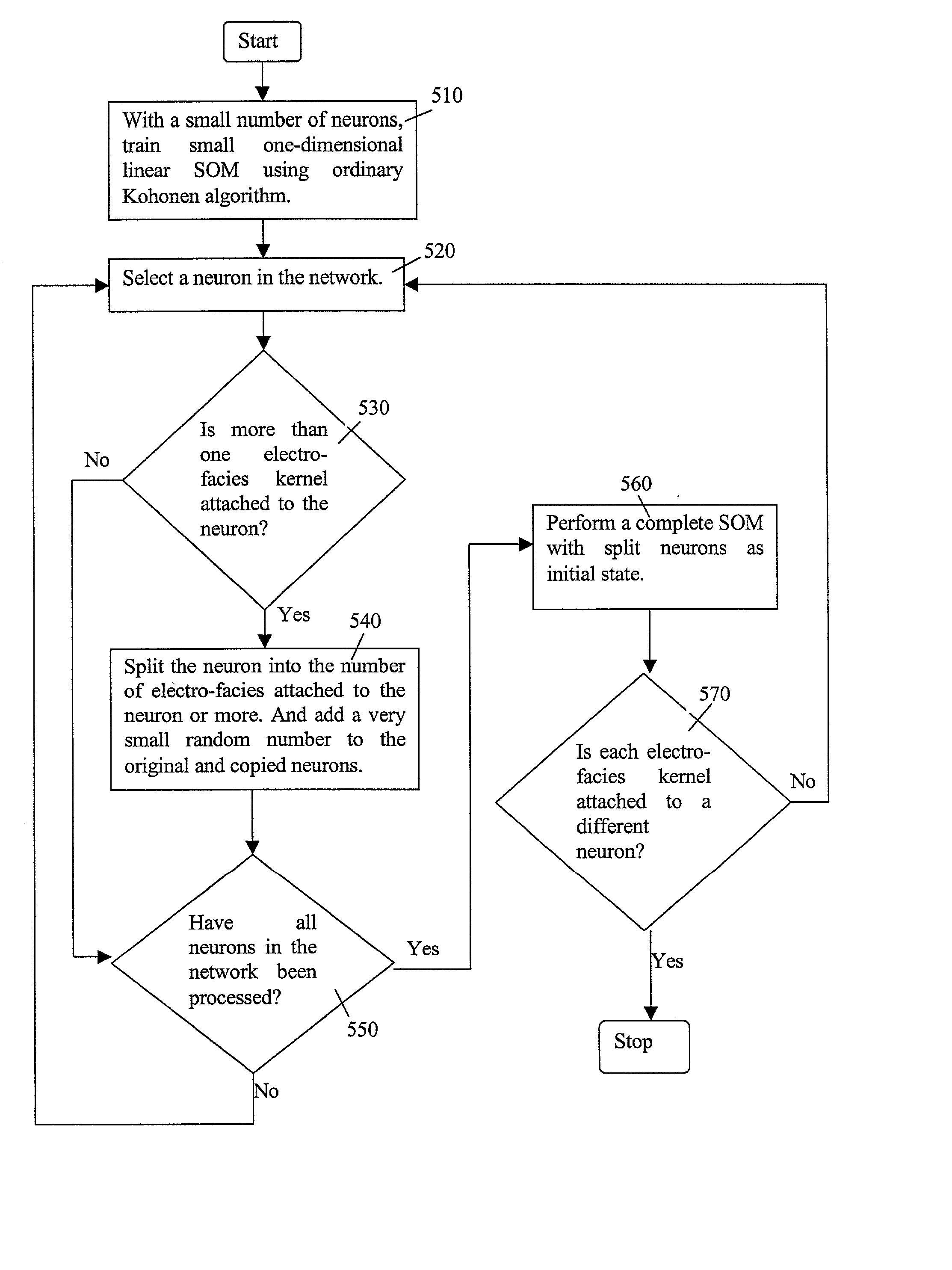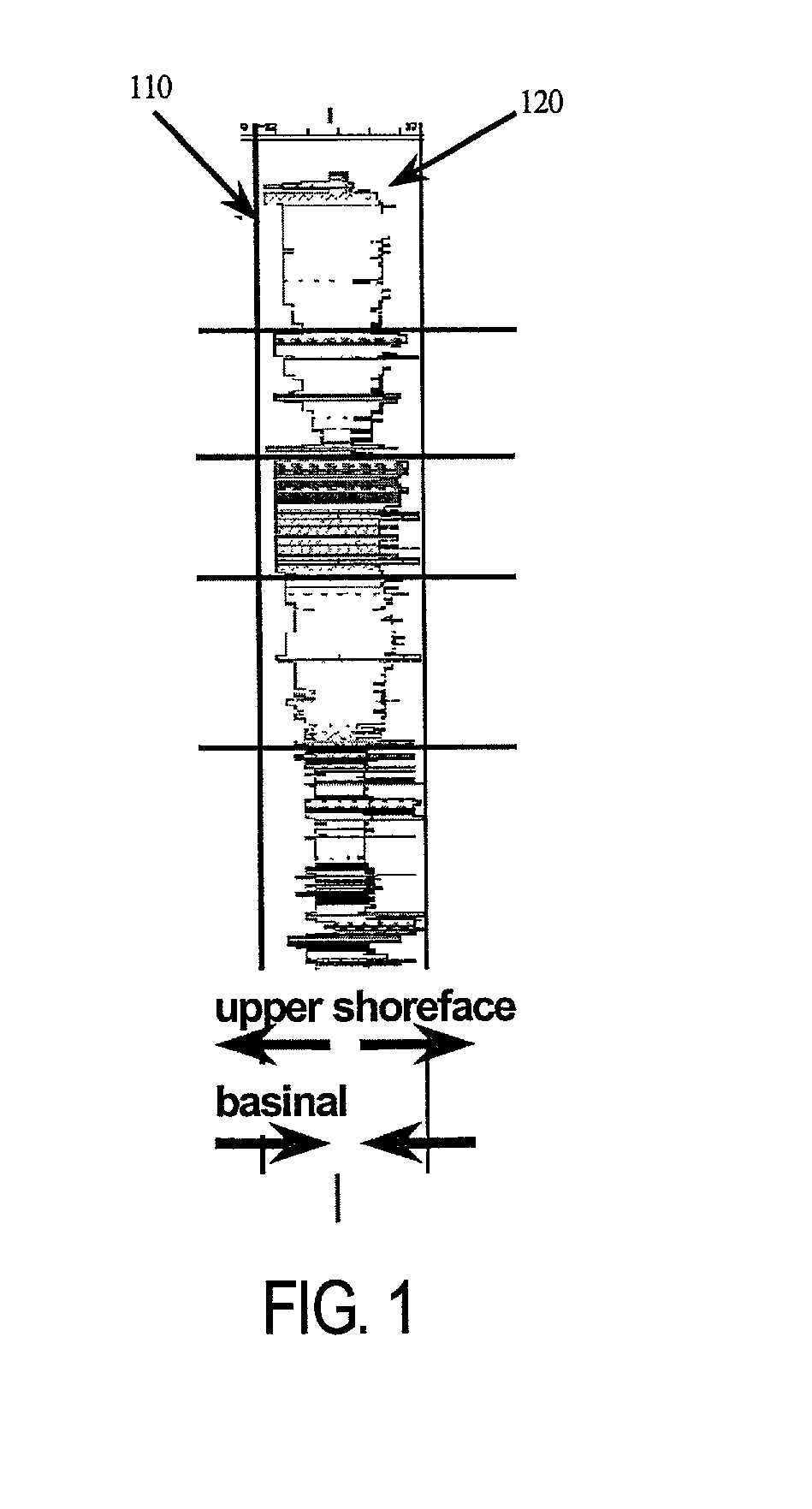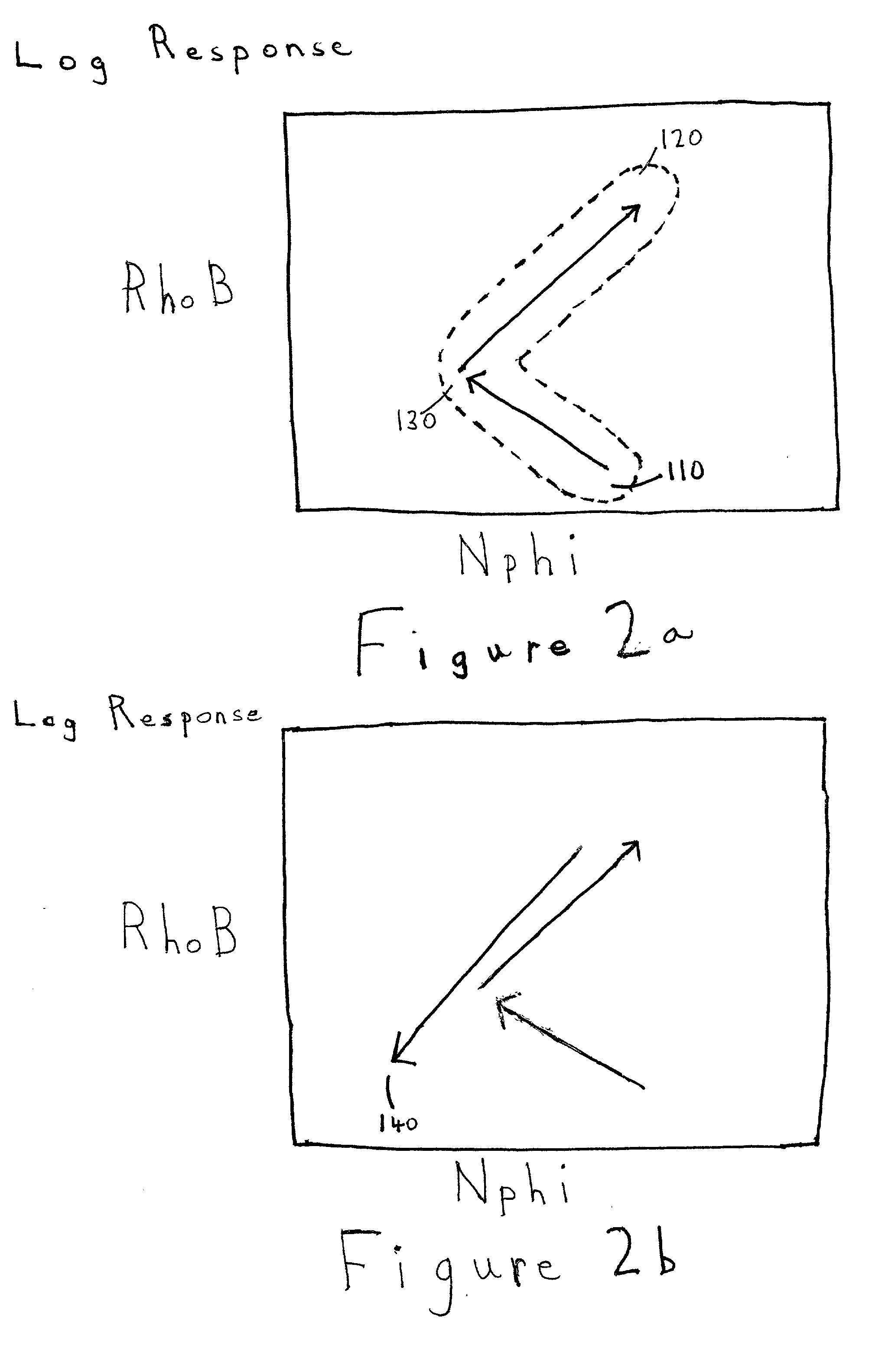Coarse-to-fine self-organizing map for automatic electrofacies ordering
a self-organizing map and automatic technology, applied in the field of geological study of earth formations, can solve the problems of slow and subjective process, inability to identify facies using these methods, and inability to normally cost-effectively use log interpretation methods
- Summary
- Abstract
- Description
- Claims
- Application Information
AI Technical Summary
Problems solved by technology
Method used
Image
Examples
Embodiment Construction
[0032] FIG. 3 shows logging equipment in a borehole 300 going through earth formations 312. The equipment includes a sonde 316 suspended in the borehole 300 at the end of a cable 318. Cable 318 connects sonde 316 both mechanically and electrically, by means of a pulley 319 on the surface, to a control installation 320 equipped with a winch 321 around which the cable 318 is wound. The control installation includes recording and processing equipment known in the art that make it possible to produce logs, i.e., graphic representations of the measurements obtained by the sonde 316 according to the depth of the sonde in the borehole or well 300.
[0033] The borehole 300 passes through a series of earth formations (not specifically shown) that is typically composed of a series of zones or "beds". The zones are identified by the rock facies they contain, e.g., clay, limestone, etc. From the geological viewpoint, each of these successive zones is characterized by a relative homogeneity that i...
PUM
 Login to View More
Login to View More Abstract
Description
Claims
Application Information
 Login to View More
Login to View More - R&D
- Intellectual Property
- Life Sciences
- Materials
- Tech Scout
- Unparalleled Data Quality
- Higher Quality Content
- 60% Fewer Hallucinations
Browse by: Latest US Patents, China's latest patents, Technical Efficacy Thesaurus, Application Domain, Technology Topic, Popular Technical Reports.
© 2025 PatSnap. All rights reserved.Legal|Privacy policy|Modern Slavery Act Transparency Statement|Sitemap|About US| Contact US: help@patsnap.com



